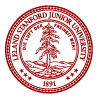Digital Modeling of Expressive Acoustic Instruments

Bios:
Stefano Lucato is an Italian Musician, Music Producer and Sound Designer. After the High School graduation at the Technical Institute ITCG he starts his professional work as musician and music producer for discography and for national radio television broadcast. His passion for music has always been joined to the one for Physics and Sound Synthesis technologies, so now his expertise ranges from musical fields to the audio signal processing. Since 2003 he deals to Sound Design in more detail collaborating with Dr. Giorgio Tommasini with whom he implemented a number of proprietary technologies for modeling expressive acoustic sounds. In 2007 Stefano developed a new and powerful manipulation method of audio samples that allows a multivector morphing with phase coherence among different elements of sound: dynamics, pitch, etc. (Synchronous Wave Triggering S.W.T.). This technique is used for the first time in 2008 with the virtual instrument "Mr.Sax T." distributed and produced in collaboration with SampleModeling (Giorgio Tommasini, Peter Siedlaczek). In 2009 it starts the fruitful collaboration with Ing. Emanuele Parravicini with whom he will work on the evolution of the previous SWT technology namely the new "Synchronous Wave Acoustic Modeling" (better known as S.W.A.M.) which allows to combine sampled sounds to concepts of physical modeling. Currently the products (Virtual Expressive Instruments) based on this technology are getting increasingly international success.
Emanuele Parravicini graduated in Telecommunications Engineering in 2002 and attended a Master in Information Technologies in 2003. He is also a musician, singer and composer, he likes music and audio applications. He focused on the field of digital audio, MIDI, audio plugins programming and published articles about plugin development with the VST standard. In 2009, his partnership with Stefano Lucato began, founding the “SWAM” Engine Project (Synchronous Waves Acoustic Modeling) as Software Designer and Lead Developer. The purpose of SWAM products is to reproduce the sound and the behavior of real expressive musical instruments using the combination of Sample Modeling and Physical Modeling techniques. In 2015, Emanuele met Simone Capitani, an UX Designer of musical applications and they started a new project called “Wizdom Productions” together with Jordan Rudess, the famous keybordist of the everlasting prog-rock band “Dream Theater”. Currently he is also collaborating with Mind Music Labs as iOS developer.

